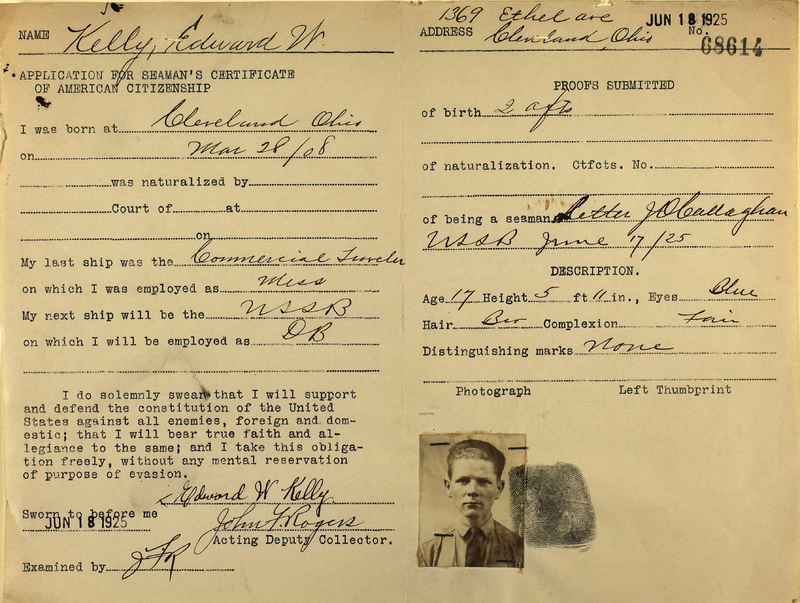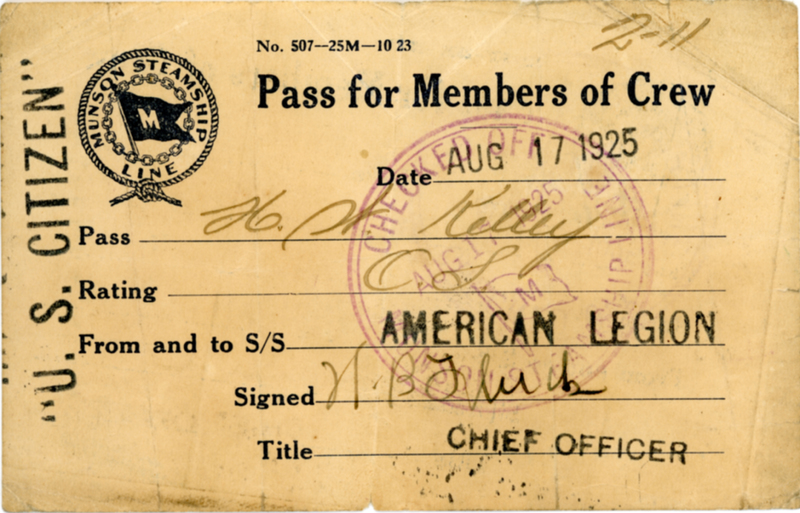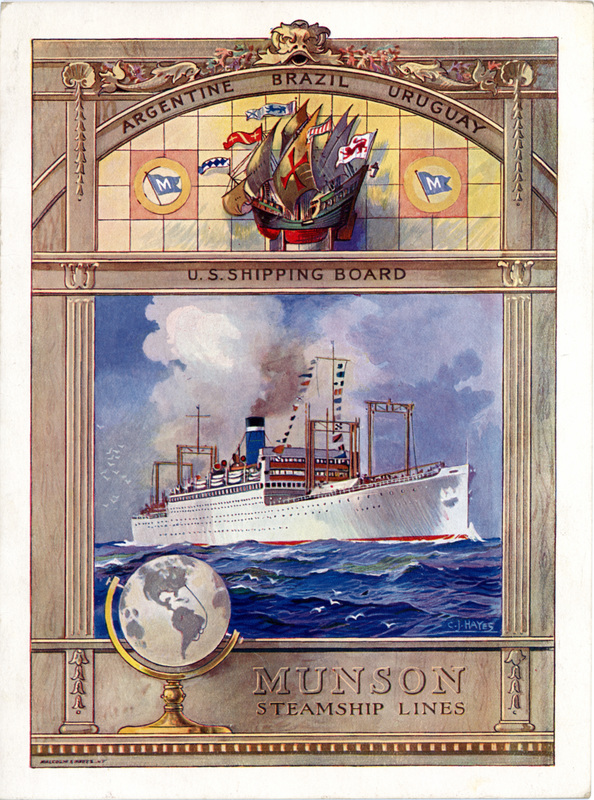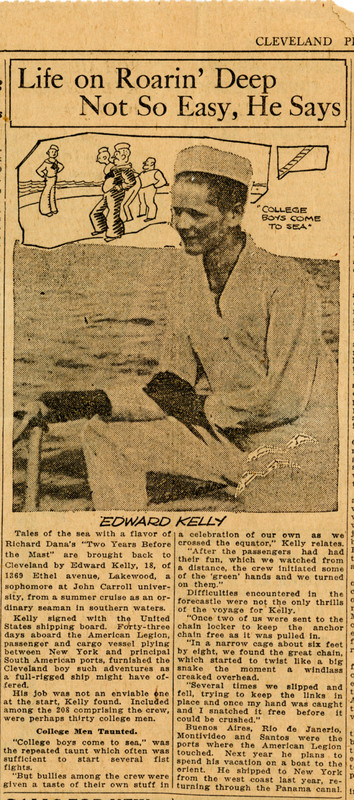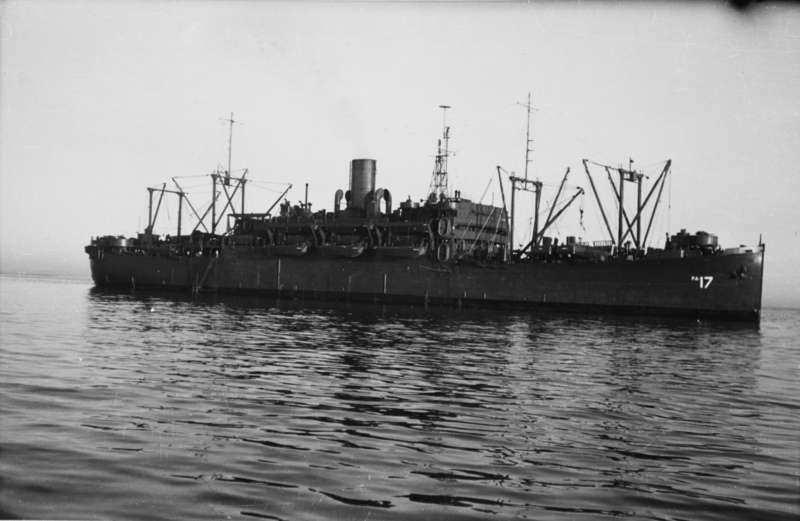A Summer at Sea
Ed Kelly spent his first summer during college working for the United States Shipping Board (USSB) on the Munson-operated steamship American Legion. He spent 43 days aboard ship during the summer of 1925, likely working as a deck boy (on his application for seaman's certificate of American citizenship, his employment is listed as DB, which is used as an abbreviation for Deck Boy in the nautical world). He was only seventeen years old at the time.
The SS American Legion was originally ordered by the USSB as a troop transport for World War I, but the war was over by the time it was completed. It was delivered to the federal government in 1921, and the government operated it for four years. In August 1922, it accidentally rammed several Argentine Navy ships, sinking one and damaging five others. In 1925, the government sold the ship to the Munson Steamship Line to be used on a New York to South America cargo and passenger run. It sailed this route for fourteen years, regularly visiting Buenos Aires, Rio de Janeiro, Montivideo, and Santos. It maintained a crew of 208 during Kelly's time aboard, with around thirty of them being college men working on the ship for the summer.
Munson Line operated American Legion until 1939 when it was laid up. A few months later the US War Department acquired the ship to be converted into a troop transport. It ended up serving a crucial role in the run-up to and during World War II. In 1940, it was used to take Crown Princess Martha of Norway out of northern Finland and bring her to the US. On the same voyage it transported almost 900 American citizens and refugees, including Danish comedian and musician Victor Borge. It also brought back a Swedish 40 millimeter Bofors antiaircraft gun from Finland, which was later copied and used in other American warships. The American Legion was the last neutral ship to leave Petsamo, Finland.
During World War II, the American Legion served as a transport ship in both the Atlantic and Pacific Oceans. The ship landed the first troops on Guadalcanal during the US invasion of the island on August 7, 1942. It was decommissioned in Olympia, Washington, in 1946 and sold for scrap in 1948.
